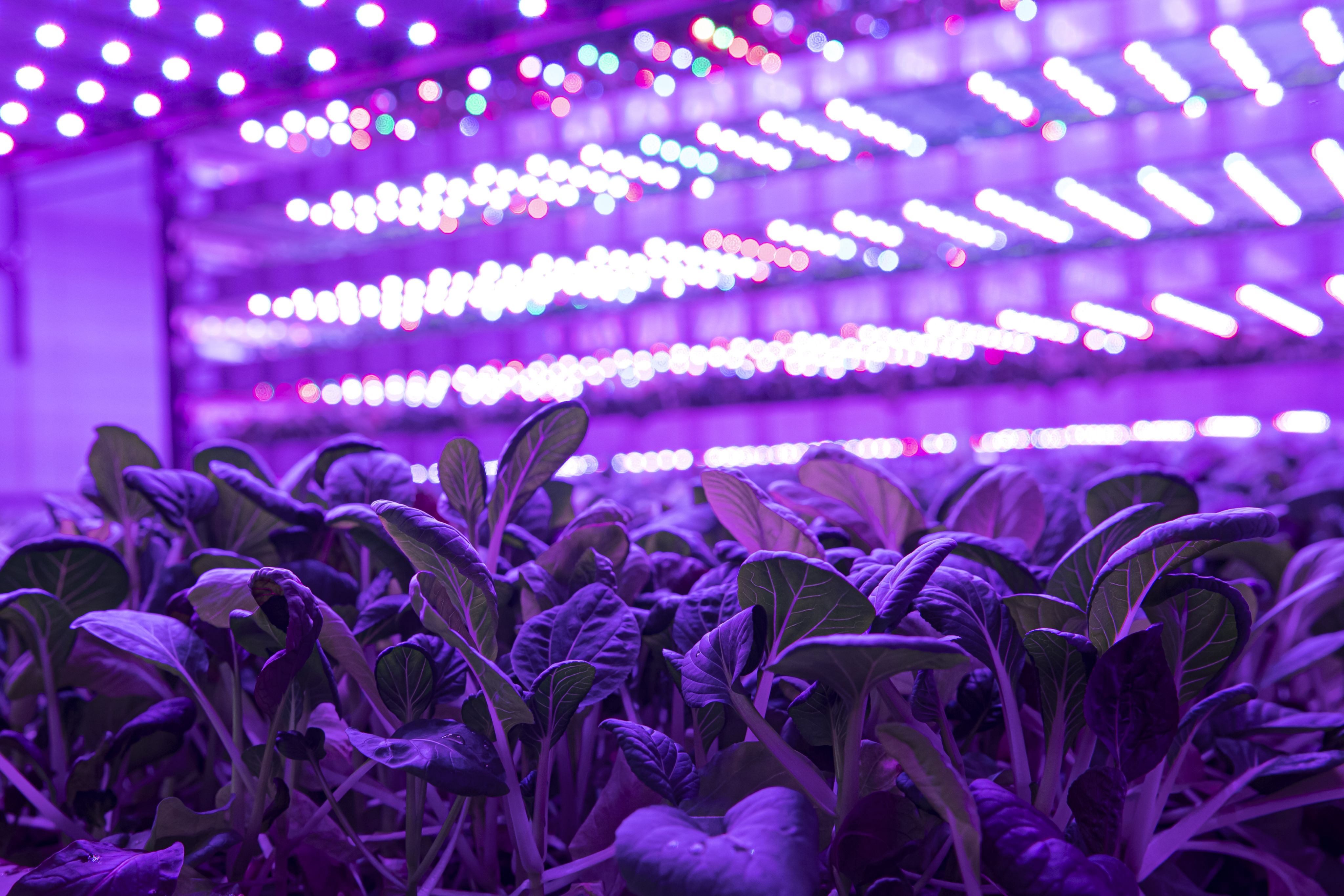“Vertical farming” to help feed the world
Farming in cities could help NZ - and the world - meet looming food crisis.
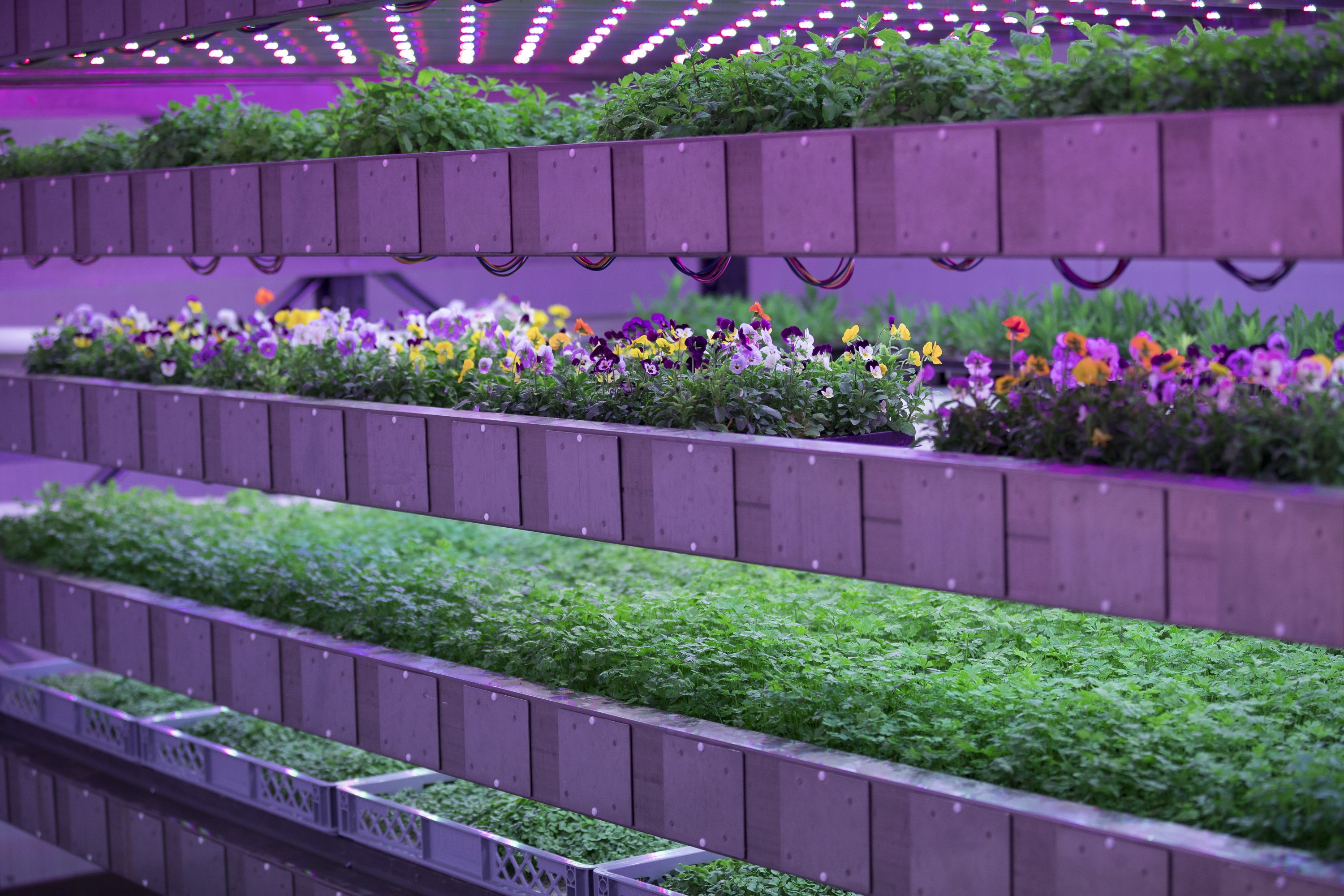
In the next 30 years, the world will have to grow as much food as it has in the last 10,000 years.
That sobering statistic means that, while climate change may be humanity’s biggest challenge, another daunting crisis looms alongside it: even if we manage to control the planet’s environmental decline, how do we feed all the world’s people?
Experts agree time is running out and, for one man tackling the problem head-on, the situation could not be more stark: “Over 800 million people live in serious poverty and in my lifetime the global population has risen from around four billion to between seven and eight billion,” says Scot David Farquhar.
“With population growth at that rate we are going to have to grow as much food in the next 30 years as we have in the last 10,000,” he says.
Farquhar is CEO of Intelligent Growth Solutions (IGS), a company based in Edinburgh but now coming to New Zealand. It has developed technology which it believes will provide part of the solution to both crises – one that is likely to see ‘farms’ springing up in city precincts.
Known as vertical farming, it uses smart technologies to grow vegetables and fruits indoors in a remote, but highly controlled environment. Seedlings are positioned on trays inside modular multi-level structures IGS calls “growth towers”.

Inside the towers - which soar up to 12m high and are built on small parcels of land - perfect year-round growing conditions can be created anywhere in the world, any time of the year.
Vertical farms may be a common sight in New Zealand in the near future. IGS has clients across four continents, including Australia, and is in the early stages of talking to interested groups in New Zealand.
“We are at the exploratory stage, but there are all kinds of reasons why vertical farming will work in New Zealand,” Farquhar says. “We see it as a key to the future of farming, but we are not going to take over the farming industry, nor will it replace traditional farming.
“On its own, vertical farming won’t solve world hunger or climate change – but it is one answer and, we believe, will help in both cases. Ultimately we think up to 30 per cent of the world’s diet could be grown in vertical farms.
“If we are to make it to 2100, we need to re-think much of how we live now; vertical farming is a key element in that re-think.”
The twin problems of climate and hunger are immense. Not only are we exploiting the world’s ecosystems beyond their limits but, Farquhar says, one third of what we grow is thrown away or wasted.
Many experts predict a grim future if change is not forthcoming. One, Professor Julian Cribb an adjunct professor at the University of Technology in Sydney, says shortages of water, land and energy – combined with the increased demand from population and economic growth – will create a global food shortage around 2050 – issues, he says, exacerbated through the loss of 75bn tonnes of topsoil a year.
The latest United Nations annual food security report shows world hunger surged in 2020. Almost 10 per cent of everyone on earth - one in 10 people - do not have enough food to eat and are considered under-nourished.
Carbon emission is recognised as a global problem, but water supply is also an issue. The OECD says agricultural irrigation - which accounts for 70 per cent of freshwater withdrawals worldwide - has tripled over the past 50 years and is on course to increase a further 40 per cent by 2030.
Benefits of going vertical
So, how can vertical farming help and what are its benefits to the environment? The answer is not just in its use of technologies like LED lighting, smart temperature, humidity and irrigation control and cloud-based remote operator control (one person can easily run up to 20 growth towers).
The other part of the answer is that no greenfield land is needed and the towers can be located close to markets.
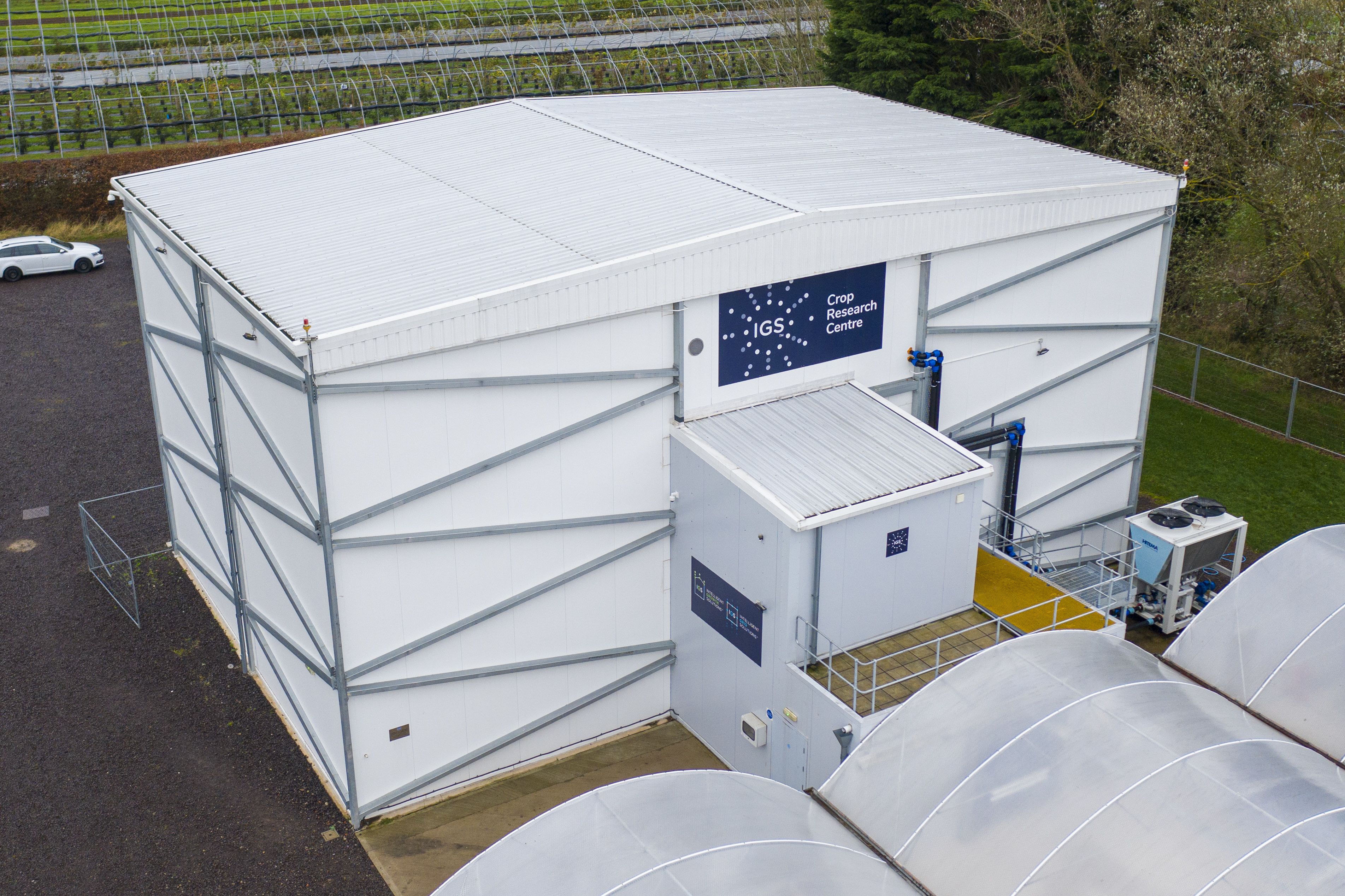
“Transportation is a big contributor to greenhouse gas emissions,” Farquhar says. “Traditionally grown produce typically travels thousands of miles from farm to plate, especially out-of-season fruits and vegetables which need to be flown in from warmer climates.
“Vertical farms do not require large amounts of land and can be set up in urban areas close to the point of distribution and consumption, significantly reducing emissions from transportation and distribution costs.
“One growth tower covers about 42sqm - up to a 1000th the size of conventional farms - and can produce 25 tonnes of food,” he says. “To achieve the same amount on a traditional farm, you would need three to four hectares of land.
“Because they use a lot less area, towers can be sited anywhere in towns and cities such as disused factory sites or on the edges of airports. But there is no reason why they couldn’t be set up by traditional farmers on their farms.”
There are other benefits. An alternative soil substrate used for growing seedlings is typically environmentally neutral, says Farquhar, and can be recycled as high-grade compost.
A closed-loop irrigation system uses less water - estimated to be about 95 per cent less than traditional soil farming - because it is only used within the plants while any excess is recycled back into the system.
Farquhar says water generated by the heating, ventilation and air temperature controls (HVAC) can be recycled for use in irrigation in the IGS system while intelligent spectral-lighting only delivers the light plants need meaning less power is required.
"Thanks to the level of automation humans rarely need to go inside the growing area which is air-locked to keep pests and disease out. This means no pesticides, herbicides or fungicides are necessary,” Farquhar says. “The benefit for society is healthier food and people, a reduction in healthcare burdens and costs and a cleaner world.”
Farquhar says the United Nations sustainability goals – the elimination of poverty, hunger, effective climate action and the development of sustainable cities and communities among them – serve as a guiding framework for IGS’ development of vertical farming technology.
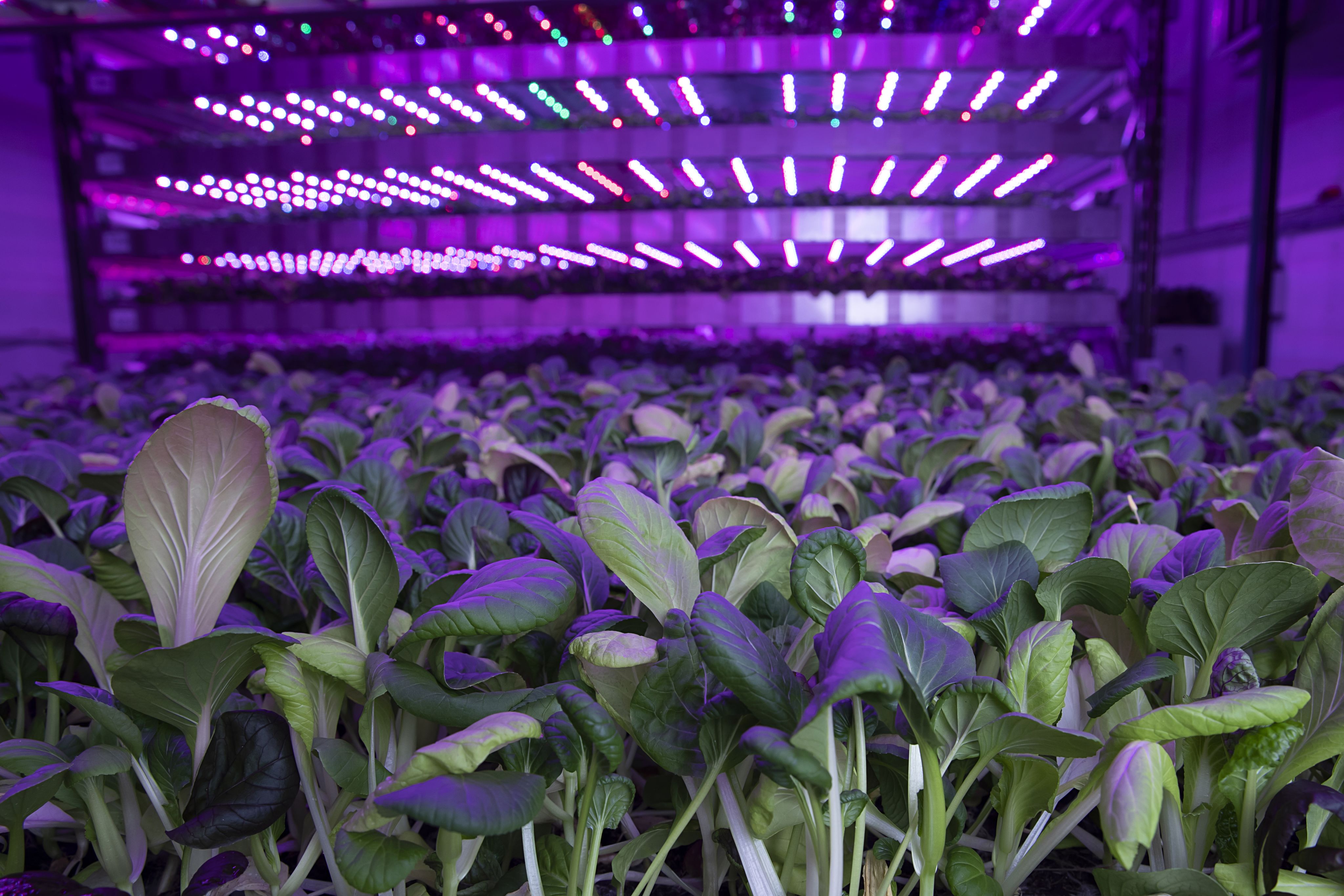
Vertical farming in action
While IGS is in the early stages of talking to a number of interested parties in New Zealand, its vertical farm technology is becoming established in other parts of the world.
In Perth, Australia, a company called Eden Towers is set to begin construction on its first IGS vertical farm and has plans, says Farquhar, to expand to further sites across Australia and into Asia.
One of the more significant developments is a partnership with Madar Farms in Abu Dhabi where there are plans to install five growth towers with the capacity to produce up to 30 tonnes of leafy greens and herbs a year.
“The Middle East is a challenging environment for crop cultivation because of high daytime temperatures and little rainfall,” Farquhar says. “So it makes a lot of sense to vertical farm there; we believe it could have huge benefits in that part of the world.”
IGS has also signed an agreement with French-based urban agriculturalists Jungle to install 17 growth towers by the end of this year. Jungle grows a range of herbs and salad vegetables for supply to select retailers across France and is also looking to vertical farming to grow flowers for use in the fragrance industry.
Farquhar says IGS is currently working on projects involving growing of seed potatoes and has just signed an agreement to supply technology to the Austrian-based wellbeing resort operator Therme. Kale, rocket, basil and dill will be among the crops Therme will grow, providing its guests with sustainable, locally-grown produce.
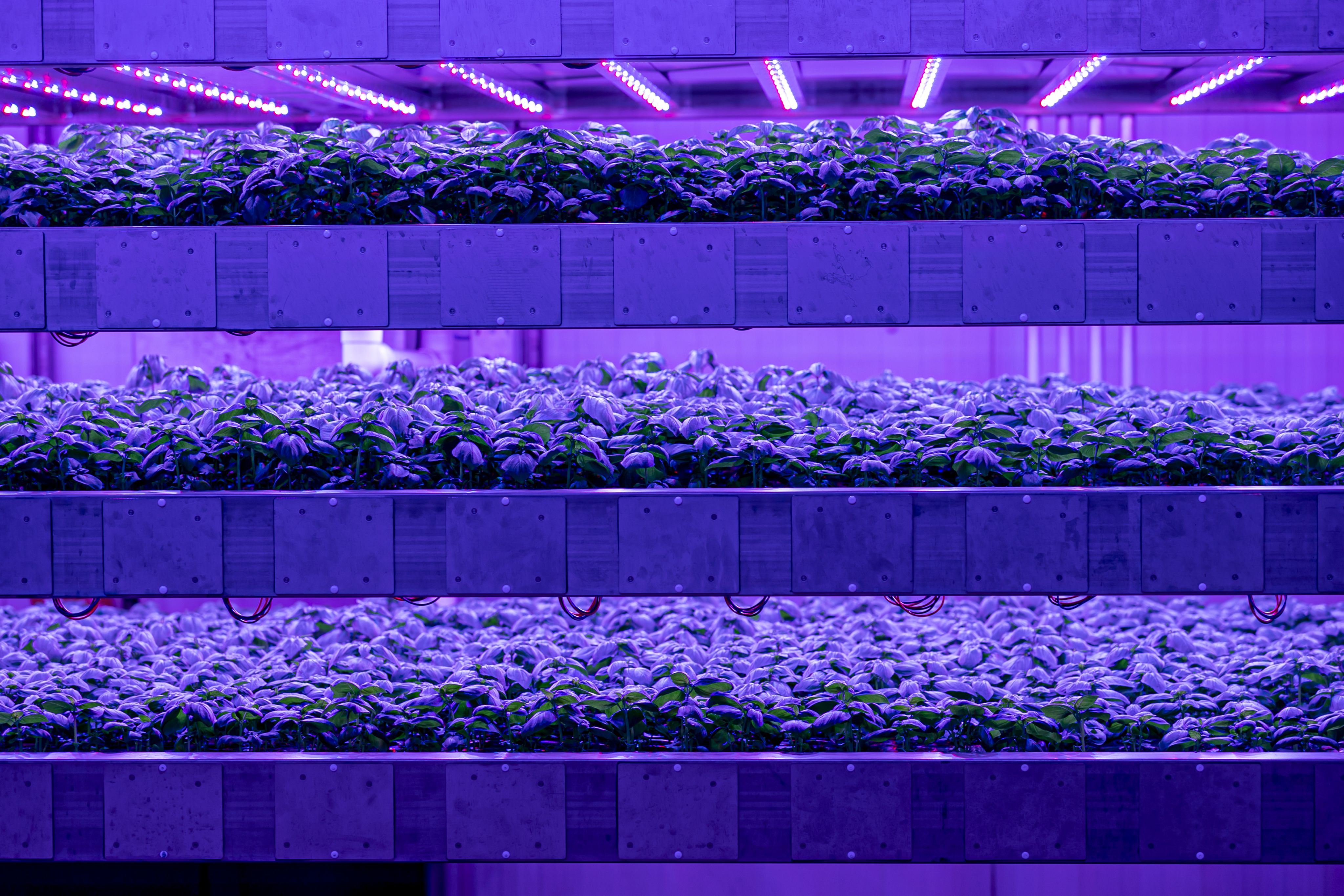
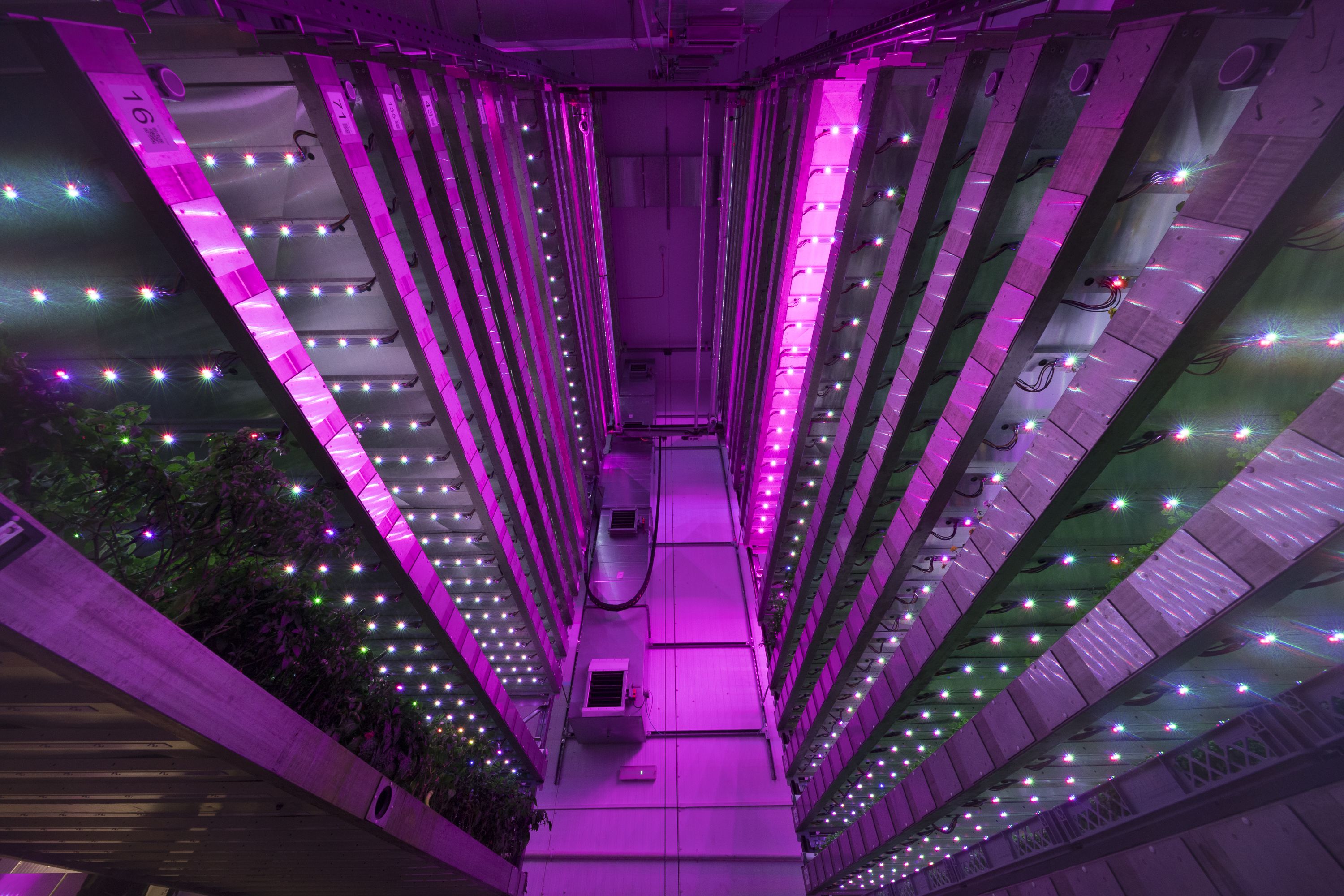
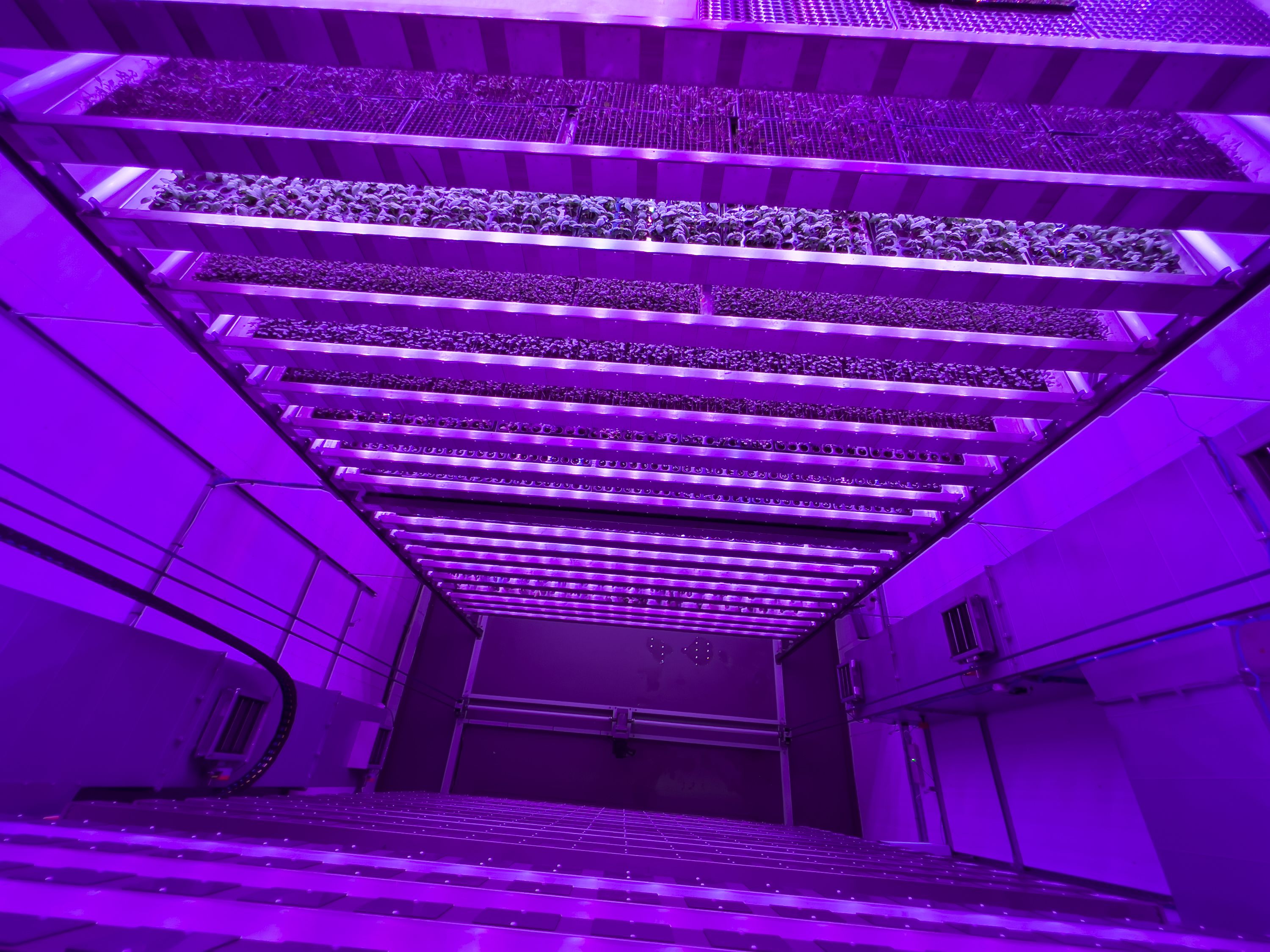
The Technology
Farquhar says IGS are not farmers: “Our job is to provide the tools; we are the tech vendors and we would never grow crops for commercial sale or compete against our customers. We grow some for research and development purposes and what we do we give away.”
The growth towers come in 6-, 9-, and 12m-high versions. A 12m tower can house up to 86 stainless steel trays each with thousands of growing plants.
IGS describe the concept as Total Controlled Environmental Agriculture, one that is able 24/7 to replicate whatever natural growing environment is required for any given crop. As Farquhar says: “Each tower can have up to 50 microclimates with perfect wind, sun and rain. It means farmers and growers are now in charge of the weather and not at the behest of it.”
IGS chief product officer Lawrence Ross says the key elements in the technology include LED lighting (there are over 1000 per tray), cloud-based remote operator control, smart temperature, humidity and irrigation systems and UV filtration that automatically sterilises air and water in the towers. Plant watering and nutrient delivery is carried out automatically via a lift in the centre of each tower.
The system is designed to keep crops at an even temperature, capture and re-use water vapour emitted by the plants and minimise the power consumption of heating, air conditioning and watering functions.

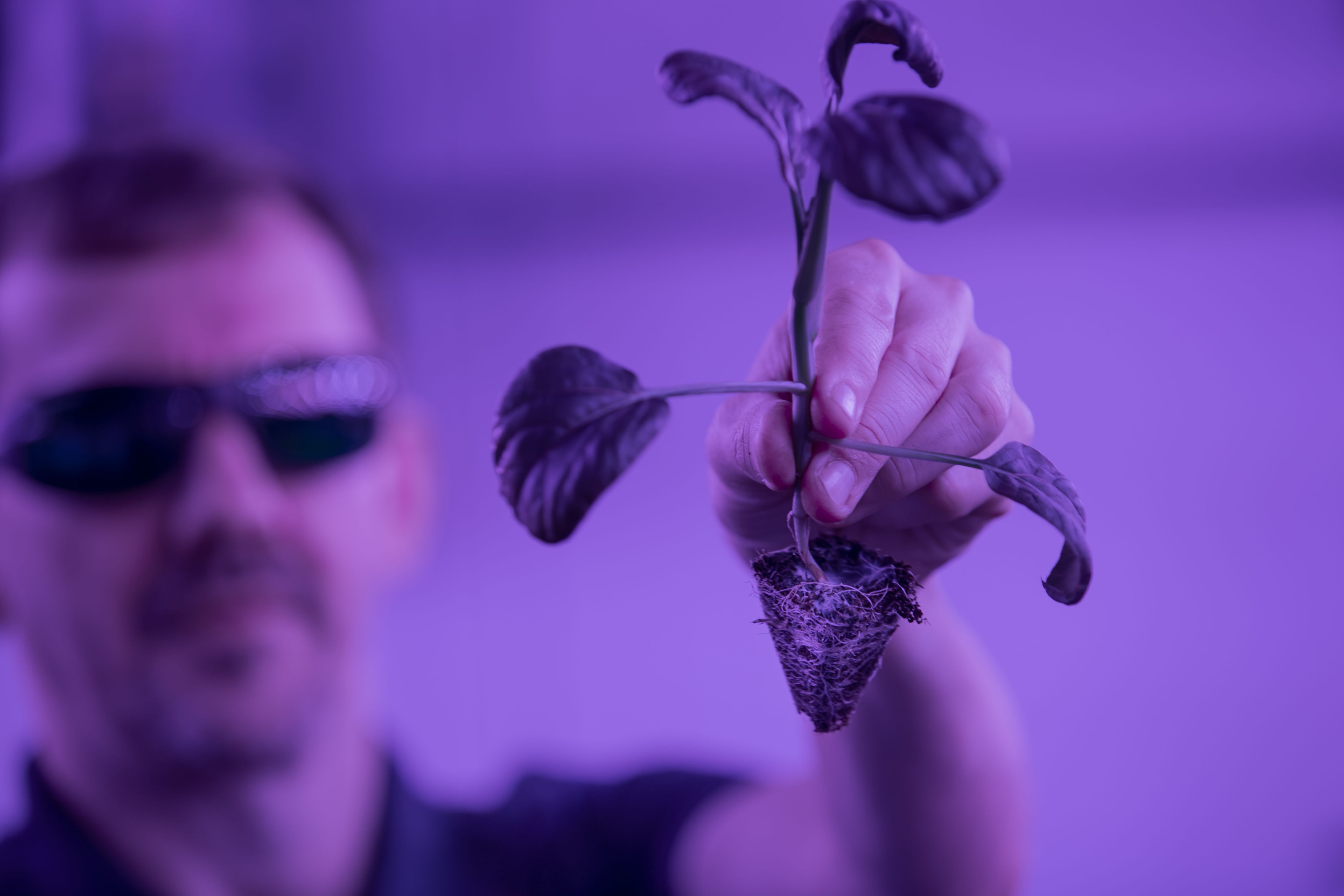
“Our power management platform flexes, meaning we can use it when it is cheaper or push back when it is more expensive and in high demand. Through these measures we achieve power savings of about 50 per cent and labour savings of close to 80 per cent,” Ross says.
“We are able to maintain precision control over plants and offer local communities varied, nutrient-rich produce all year round regardless of their location. This ability (to grow summer crops during winter for example) is incredible and a powerful opportunity to disrupt the agriculture industry.”
Multiple crops can be grown in a tower including leafy greens like lettuce and spinach, kale, broccoli, root-based crops such as potatoes and soft fruits like strawberries. IGS is also looking at growing tree seedlings to support reforestation projects and commercial forestry.
"When you think of how many billion trees the planet needs, to grow them in a controlled environment disease free could be a very effective way of meeting this demand,” says Ross.
Although aware there is opposition to the idea of vertical farming, Farquhar says he believes people hold this view only because they don’t realise its potential or capability.
“We can create perfect weather environments all year round and I would ask any traditional farmer how they could achieve that on their land,” he says. “At the end of the day this opportunity is there for everyone - farmers included.”
The Strategy
Meanwhile Ross says IGS customers typically start small and gradually scale up their operation and facilities as a business matures. Once this expansion occurs, so too does the need to increase the level of automation.
“Planning production becomes increasingly challenging as the rate of growing multiple crops or batches of the same crops at the same time increases,” he says. “This calls for powerful planning software and the automation and integration of the various stages from seed to harvest as well as the movement of crops throughout the facility.”
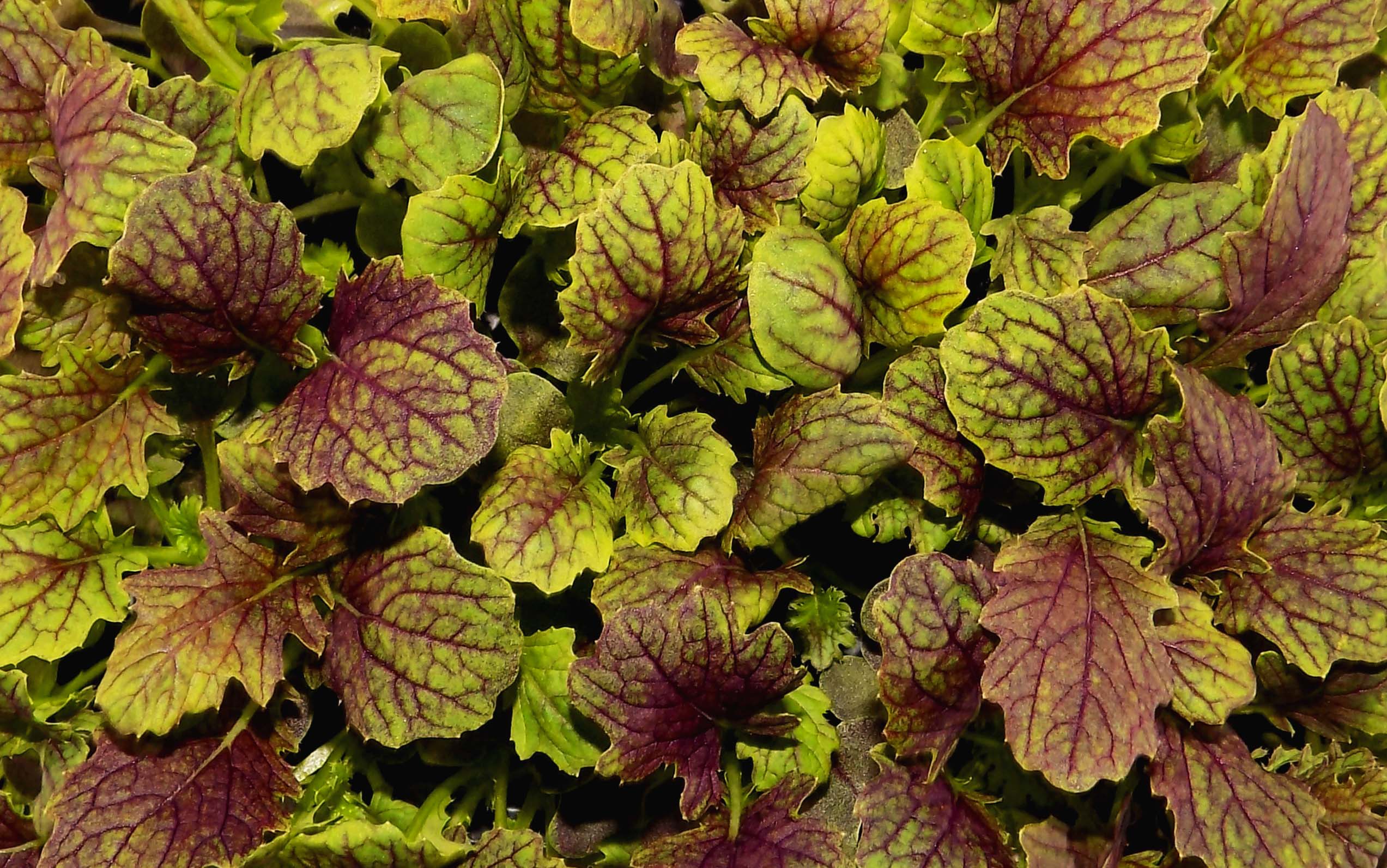
Growing a large volume of a single crop can be risky due to market volatility so the ability to grow different types of crops in parallel – and to switch these quickly – is vital.
“The Internet of Things (IoT) is making vertical farms more connected and intelligent – and enables cost savings through more efficient services and optimised operations.”
Ross says patents held by IGS focus on fundamentals of vertical farming such as safety, control, scaleability and efficiency.
Patents cover many of the functions including fully automated tray handling, technology to control light and weather, the operation of the central elevators in towers, plant health inspection, watering, environmental sensing and the control of the path and condition of air flowing through towers.
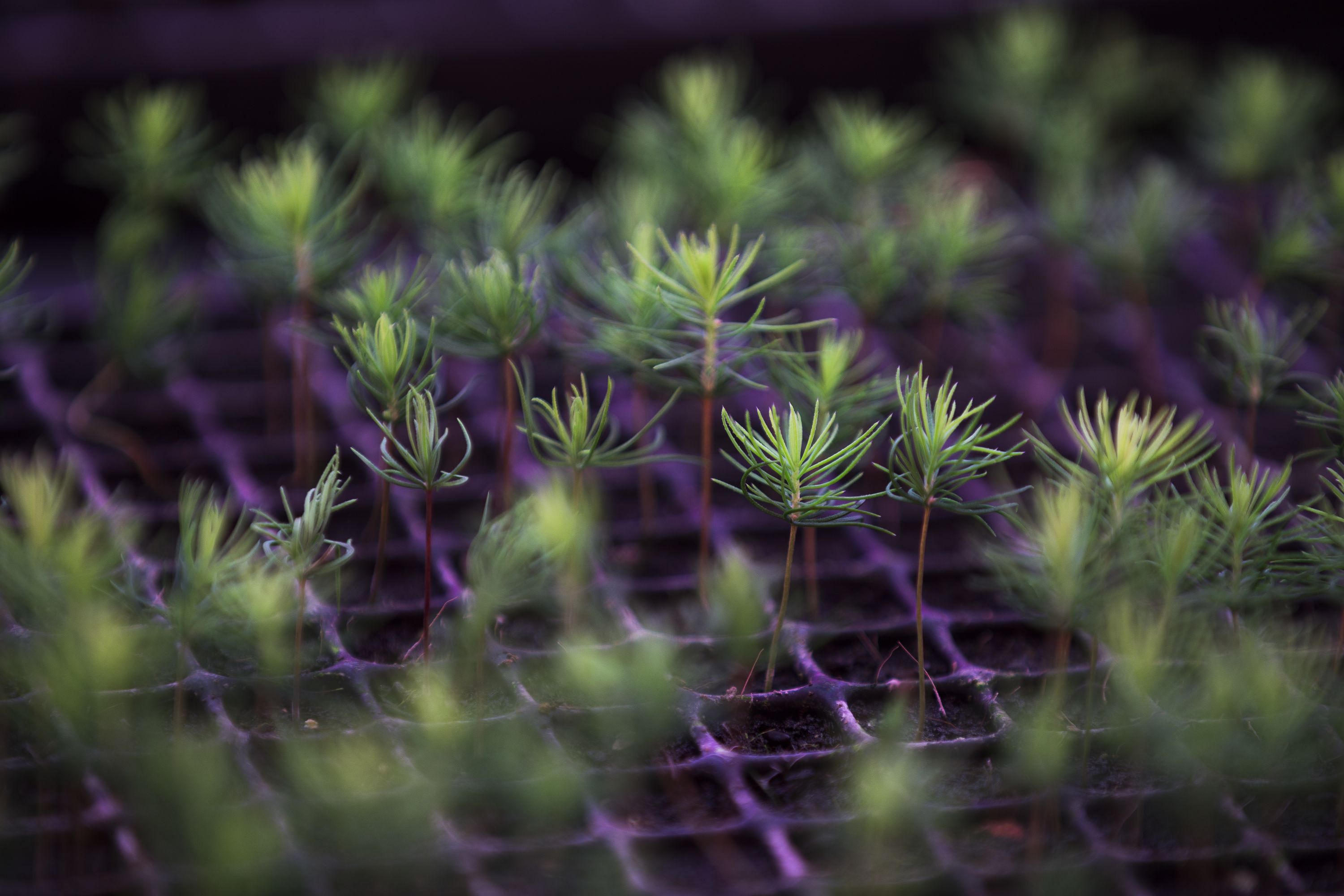
Vertical farming and the future
David Farquhar is convinced vertical farming has an important role to play feeding the world in coming decades.
“By 2050 we need a 70 per cent increase in food production,” he says. “At the same time the soil we grow crops in out in the field is degrading causing a rapid decrease in the amount of fertile farmland.
“Traditional methods of farming also require a vast amount of water. In some areas 70 per cent of all fresh water is consumed by agriculture to the point where disruption of the supply to households becomes a realistic threat.”
Farquhar says the Covid pandemic has taught us how fragile supply chains are. The ability of vertical farming to locate anywhere – and to be sited locally close to consumers – not only saves time and costs in transport and carbon emissions, but ensures security of food supply anywhere on the planet.
“Growing out in the field and in glass houses will remain important,” he says. “But a hybrid approach including vertical farming is an absolute necessity if we want to continue to feed the world population and maintain the planet at the same time.”
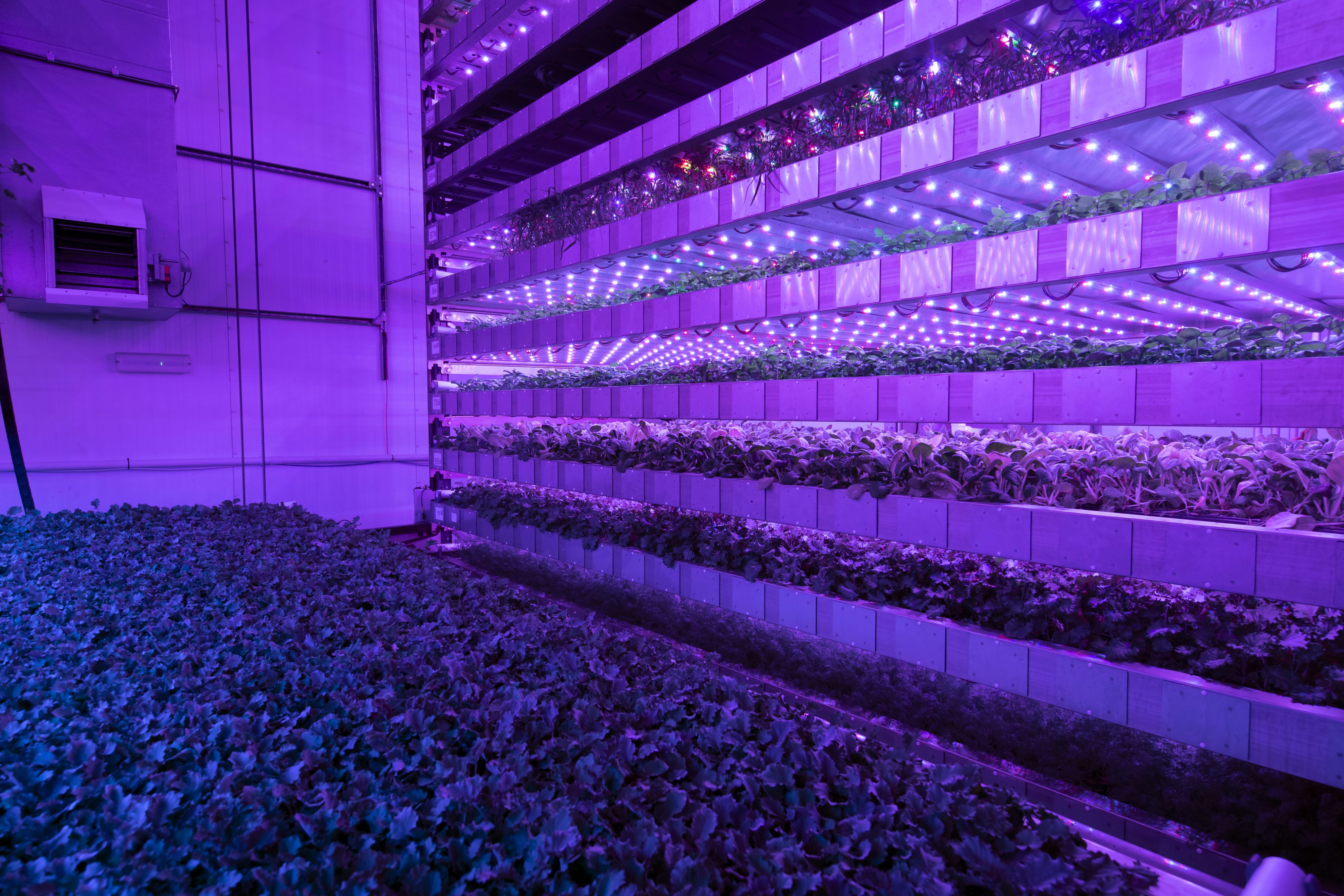
Interested in a vertical farm?
Speak with IGS
